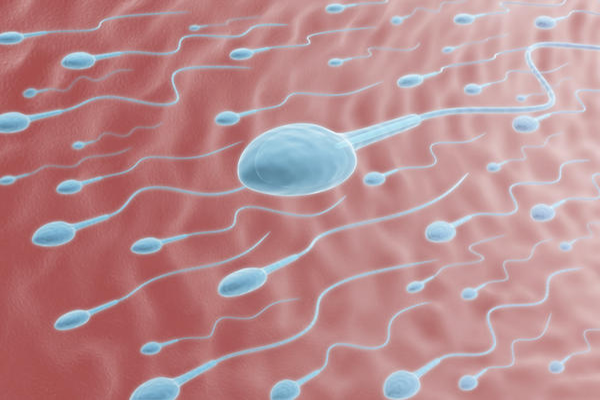Comparative study of sperm motility in Metformin-using and Insulin-dependent diabetics
DOI:
https://doi.org/10.15419/bmrat.v4i06.180Keywords:
Insulin-dependent, Metformin, Morphological changes, Sperm motility, BiologyAbstract
Background: Diabetes mellitus (DM) represents one of the greatest threats to modern global health. DM may affect male reproductive function at multiple levels as a result of its effects on spermatogenesis, sperm motility, sperm morphology, and change in sperm structure.
Methods: The present study deals with sperm motility and sperm morphological changes associated with diabetes in the male population. In this study, 50 insulin-dependent and 50 metformin users were selected, with ages of males ranging from 26-54 years and duration of diabetes distributed over 3-15 years. Both insulin-dependent and metformin-using diabetic subjects were evaluated for sperm analysis.
Results: Sperm analysis data showed a significant increase (p ±0.0005) in total sperm count in insulin-dependent diabetic men. However, sperm motility was found to be about 10-15% less in insulin-dependent patients compared to metformin users. Moreover, sperm morphology was improved in 6% of metformin users compared to insulin-dependent diabetics.
Conclusion: Our study concludes that metformin does not significantly affect sperm count. However, it does significantly affect sperm motility, when compared to insulin-dependent diabetic men. This study established an important relationship between diabetes and sperm motility, which reflects the reproductive capabilities of men.
References
Ali, S., Shaikh, R., Siddiqi, N., and Siddiqi, P. (1993). Semen analysis in insulin-dependent/non-insulin-dependent diabetic men with/without neuropathy. Systems Biology in Reproductive Medicine 30, 47-54.
Association, A.D. (2010). Diagnosis and classification of diabetes mellitus. Diabetes Care 33, S62-S69.
Association, A.D. (2014). Diagnosis and classification of diabetes mellitus. Diabetes Care 37, S81-S90.
Baccetti, B., la Marca, A., Piomboni, P., Capitani, S., Bruni, E., Petraglia, F., and De Leo, V. (2002). Insulin-dependent diabetes in men is associated with hypothalamo-pituitary derangement and with impairment in semen quality. Human Reproduction 17, 2673-2677.
Bartak, V., Josifko, M., and Horackova, M. (1974). Juvenile diabetes and human sperm quality. International journal of fertility 20, 30-32.
Bosman, E., Esterhuizen, A., Rodrigues, F., Becker, P., and Hoffmann, W. (2014). Effect of metformin therapy and dietary supplements on semen parameters in hyperinsulinaemic males. Andrologia.
Daubresse, J., Meunier, J., Wilmotte, J., Luyckx, A., and Lefebvre, P. (1978). Pituitary-testicular axis in diabetic men with and without sexual impotence. Diabete & metabolisme 4, 233-237.
Denton, R., Brownsey, R., and Belsham, G. (1981). A partial view of the mechanism of insulin action. Diabetologia 21, 347-362.
Ding, E.L., Song, Y., Malik, V.S., and Liu, S. (2006). Sex differences of endogenous sex hormones and risk of type 2 diabetes: a systematic review and meta-analysis. Jama 295, 1288-1299.
Donner, T., and Munoz, M. (2012). Update on insulin therapy for type 2 diabetes. The Journal of Clinical Endocrinology & Metabolism 97, 1405-1413.
Ewing, D. (1985). Sexual dysfunction in diabetic men. Practical Diabetes International 2, 6-9.
Fedele, D. (2005). Therapy Insight: sexual and bladder dysfunction associated with diabetes mellitus. Nature Clinical Practice Urology 2, 282-290.
Hunt, C.D., Johnson, P.E., Herbel, J., and Mullen, L.K. (1992). Effects of dietary zinc depletion on seminal volume and zinc loss, serum testosterone concentrations, and sperm morphology in young men. The American journal of clinical nutrition 56, 148-157.
Lampiao, F., and Du Plessis, S.S. (2008). Insulin and leptin enhance human sperm motility, acrosome reaction and nitric oxide production. Asian journal of andrology 10, 799-807.
Lutz, W. (2006). Fertility rates and future population trends: will Europe's birth rate recover or continue to decline? International Journal of Andrology 29, 25-33.
McBrien, K., Rabi, D.M., Campbell, N., Barnieh, L., Clement, F., Hemmelgarn, B.R., Tonelli, M., Leiter, L.A., Klarenbach, S.W., and Manns, B.J. (2012). Intensive and standard blood pressure targets in patients with type 2 diabetes mellitus: systematic review and meta-analysis. Archives of internal medicine 172, 1296-1303.
Morgante, G., Tosti, C., Orvieto, R., Musacchio, M.C., Piomboni, P., and De Leo, V. (2011). Metformin improves semen characteristics of oligo-terato-asthenozoospermic men with metabolic syndrome. Fertility and sterility 95, 2150-2152.
Niven, M., Hitman, G., and Badenoch, D. (1995). A study of spermatozoal motility in type 1 diabetes mellitus. Diabetic medicine 12, 921-924.
Organization, W.H. (2002). Diabetes: the cost of diabetes (Fact sheet No. 236). World health organization (WHO) www who intlmediacentre/factsheets/fs236/en.
Pitteloud, N., Hardin, M., Dwyer, A.A., Valassi, E., Yialamas, M., Elahi, D., and Hayes, F.J. (2013). Increasing insulin resistance is associated with a decrease in Leydig cell testosterone secretion in men. The Journal of Clinical Endocrinology & Metabolism.
Pitteloud, N., Mootha, V.K., Dwyer, A.A., Hardin, M., Lee, H., Eriksson, K.-F., Tripathy, D., Yialamas, M., Groop, L., and Elahi, D. (2005). Relationship between testosterone levels, insulin sensitivity, and mitochondrial function in men. Diabetes Care 28, 1636-1642.
Ranganathan, P., Mahran, A.M., Hallak, J., and Agarwal, A. (2002). Sperm cryopreservation for men with nonmalignant, systemic diseases: a descriptive study. Journal of andrology 23, 71-75.
Robinson, R., and Fritz, I.B. (1981). Metabolism of glucose by Sertoli cells in culture. Biology of reproduction 24, 1032-1041.
Sexton, W.J., and Jarow, J.P. (1997). Effect of diabetes mellitus upon male reproductive function. Urology 49, 508-513.
Silink, M. (2002). Childhood diabetes: a global perspective. Hormone Research in Paediatrics 57, 1-5.
Stumvoll, M., Nurjhan, N., Perriello, G., Dailey, G., and Gerich, J.E. (1995). Metabolic effects of metformin in non-insulin-dependent diabetes mellitus. New England Journal of Medicine 333, 550-554.
Torgerson, J.S., Hauptman, J., Boldrin, M.N., and Sjöström, L. (2004). XENical in the Prevention of Diabetes in Obese Subjects (XENDOS) Study A randomized study of orlistat as an adjunct to lifestyle changes for the prevention of type 2 diabetes in obese patients. Diabetes Care 27, 155-161.
Zysk, J., Bushway, A., Whistler, R., and Carlton, W. (1975). Temporary sterility produced in male mice by 5-thio-D-glucose. Journal of reproduction and fertility 45, 69-72.

Downloads
Published
Issue
Section
License
Copyright The Author(s) 2017. This article is published with open access by BioMedPress. This article is distributed under the terms of the Creative Commons Attribution License (CC-BY 4.0) which permits any use, distribution, and reproduction in any medium, provided the original author(s) and the source are credited.
